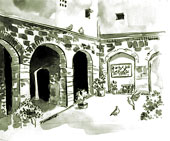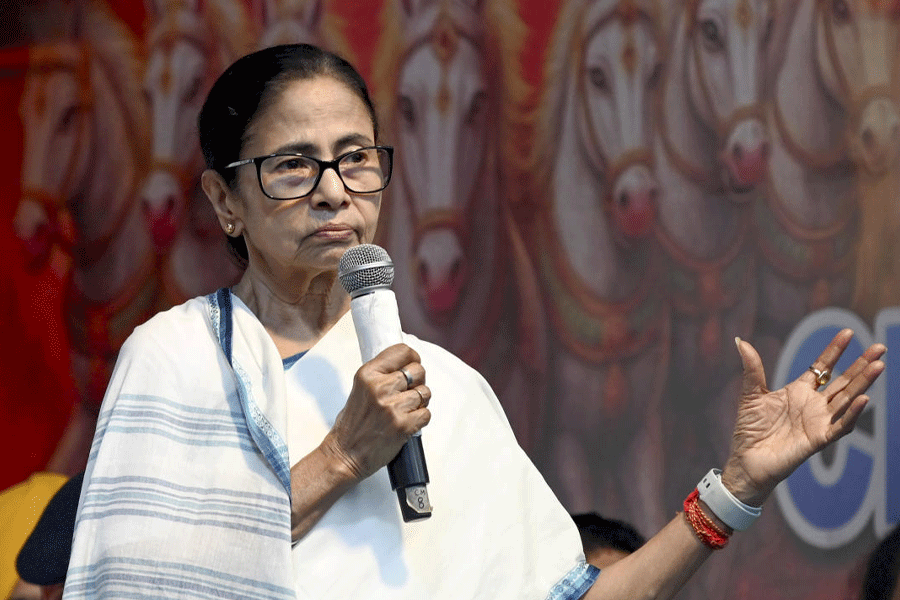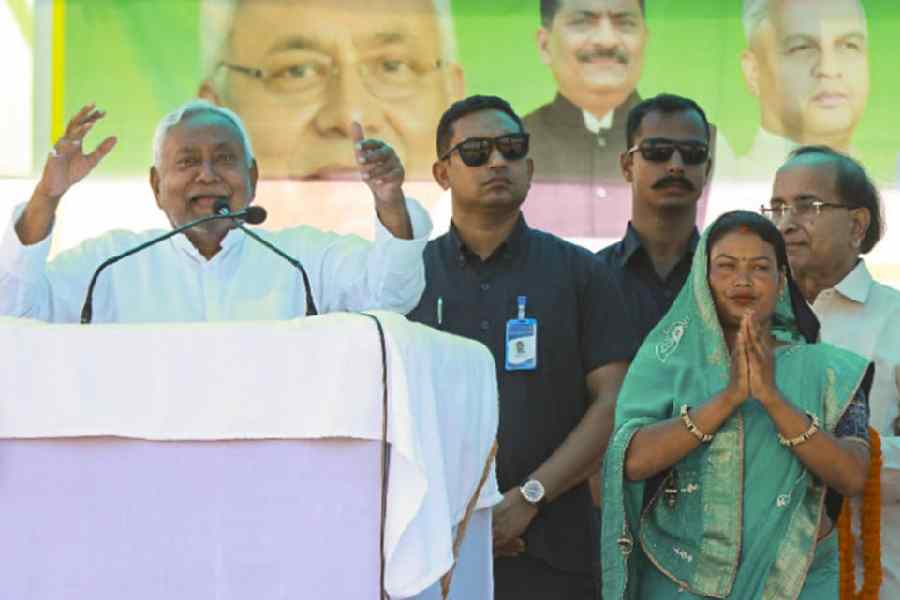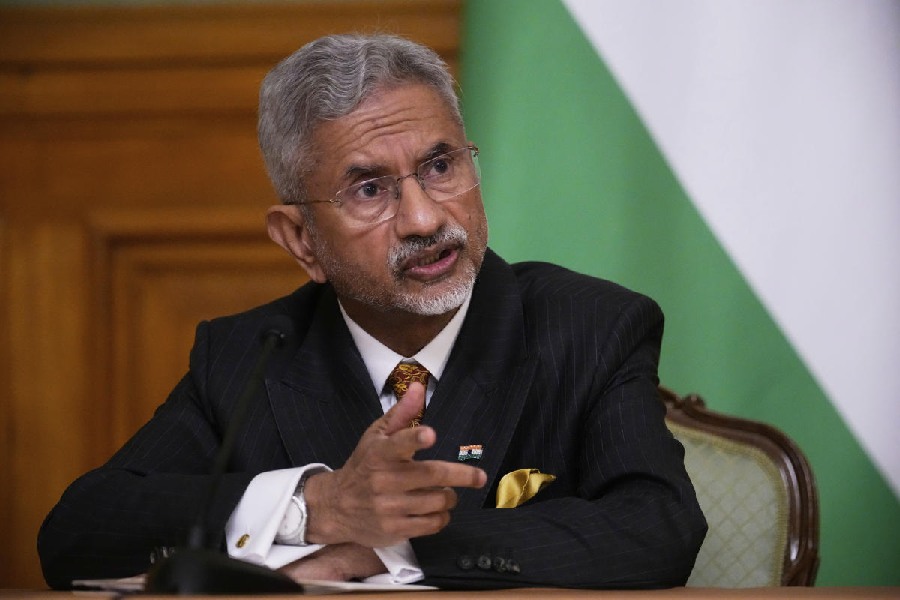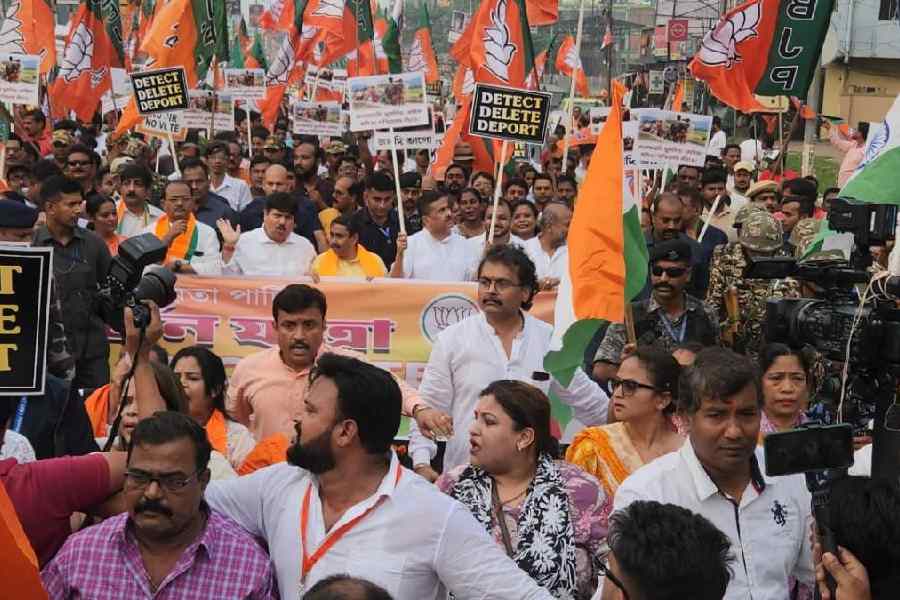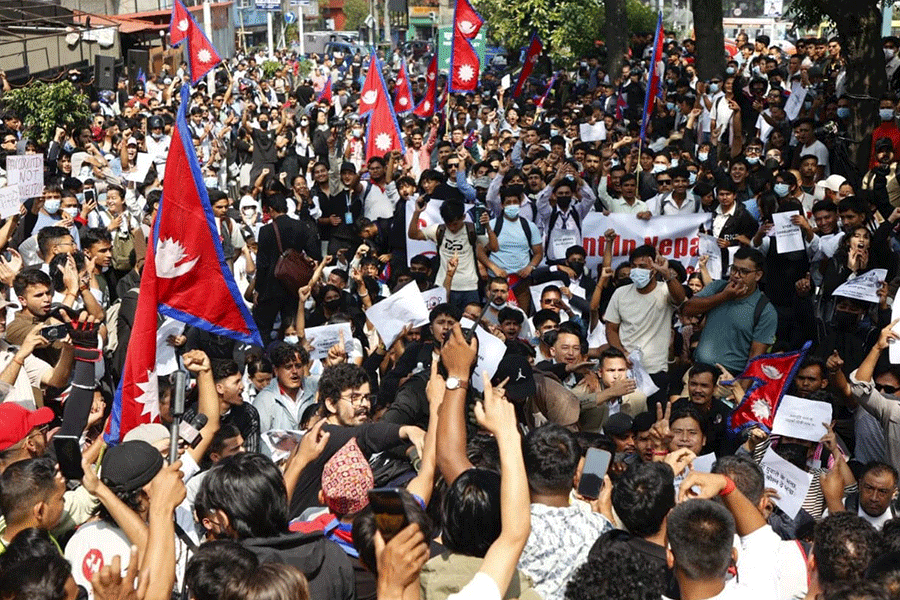 |
Khan Sahab of the New Punjab Boot House frowns. ?Ghar nahin, Mirza Ghalib ki haveli kahiye,? he admonishes, before explaining how to get to the mansion, in chaste Urdu. Khan Sahab?s shoe shop is right at the point where Ballimaran narrows down to a four-feet-wide lane, with the smells of fresh jalebis and vinyl floor-covering material wafting in the air to welcome you at your peril.
Everyone in Chandni Chowk knows Ballimaran gali and the rickshaw-pullers and the phatphat seva jeeps which clog the road at all times will shout directions at you even as you pass them by, walking. But Ghalib ki haveli takes a bit of finding. A lane narrower than Ballimaran, for some reason called Qasimjan Street, is where Delhi?s poet laureate breathed his last, and where, many years and many tears later, a memorial has been set up.
Delhi is bustling with Ghalib Week since last Friday, for no particular reason than to celebrate the great poet?s residence in the city. Old writings have been dug up. Famous names such as theatre personality Habib Tanvir and Jamia Millia Islamia University vice-chancellor Mushirul Hasan have been roped in. Everything about Mirza Assadullah Baig Khan ? from his fondness for mangoes to his patangbazi, to, not the least important, his poetry ? is being talked about in detail. The Ghalib enthusiasts are all set to prove that India?s favourite Urdu poet really had an ?andaaz-e-bayaan aur? (a style of his own). Meanwhile, the hallowed shrine at Qasimjan, where so much of the magnificent poetry was composed, lies in anonymity.
Qasimjan, named after an immigrant nawab from Iran, is like any other gali in Purani Dilli. There are the omnipresent apple carts and chashme ki dukaan. At the point where Qasimjan takes off from the more famous Ballimaran is the Hindustan Dawakhana, a very Mughal house in orange with black plaques announcing how the Delhi government has restored the place. The Dawakhana was one of the poet?s favourite?s haunts, where he held his famous night-long poetry sessions. Now, rooms full of bandages and old men with lung ailments wait at the OPD.
Opposite the Dawa-khana, the quest is finally over. An arched doorway with heavy wooden doors, along with a couple of boards telling you where you?ve reached with entry timings, is how Hakimon Ki Haveli welcomes you. Ghalib, who was born in Agra in 1797, lived in the house from 1850, his days spent between compiling his renowned Diwan and writing long pleading letters to the British government?s viceroys to reinstate his Rs 700 annual pension.
Inside, there?s another arch, divided in the middle. From one side, you catch a glimpse of a board with an Urdu couplet, and a brick-walled courtyard lined with plants. The other, bigger, side, where you are almost tempted to go instead of the memorial, has PCO booths and tailoring shops which specialise in necklines. ?No one knows which buildings are part of Ghalib?s house and which are not,? says Nayab Ahmed, the tailor. Ahmed is happy about the ambiguity. He is a tenant of Fakruddin, who sits at the arched door on a bench in his lungi most of the time.
Ghalib Memorial is essentially a minuscule part of the haveli, consisting of two-and-a-half rooms, converted to ?its original splendour? by the Delhi government in 2000. Before that, as a 1986 newspaper photograph shows, the place was a coal dump. Even now, above the ground floor memorial is a nondescript set of rooms with a small bathroom window overlooking the courtyard. One of the rooms of the restored area has a tacky clay image of the poet, hookah in hand, writing at his desk, and a few utensils ? a plaque lets us know ? ?like the ones used in his time?. The other, a dark corridor really, has a huge photograph of Nosha Mian, the last ever taken.
The security guard, Syed Singh Vats, is happy to receive his first visitor of the day. He points out all the places that are of interest, including the nails horses were tied to. Sitting in the courtyard, all you can see is Fakruddin?s three-storey house next to the memorial. The lakhori bricks, a speciality of the Mughal era, peek out of the peeling dirty green paint, and the sandstone ledges go all the way to the next house. Tell-tale signs, but Fakruddin isn?t going anywhere.
Fakruddin?s father bought it from the Indian government in 1961 at a reported sum of ?ikkis hazaar, sare char sau rupaye?, after the government had acquired control over it in 1947 from its then owner who migrated to Pakistan. An effort was made in 1969, Ghalib?s death centenary, to reclaim the house, but it failed. However, from time to time, articles about the deplorable state of Ghalib?s house kept appearing in newspapers. Horror stories about coal depots and lavatories in Ghalib?s once intimate chambers surfaced. Lobbyists and Ghalib lovers protested. And then, four years ago, the Delhi government finally opened the memorial with whatever parts of the haveli it could lay its hands on.
Post-restoration, the lakhori bricks have been exposed from beneath the layers of cement. The sandstone padding has, however, been lost. Still, the place reminds you of what it may have been for the poet to live in, sandwiched between a mosque and the tyranny of a fanatically pious wife. The mosque is still visible, as a testimony to the poet?s agonised couplet: Zahid sharaab peeney de masjid mein baith kar/ ya phir woh jagah bata jahan khuda nahin (Either allow me to drink in a mosque/ or show me a place where God isn?t around).
Maybe his years at Ballimaran were unhappy ones, maybe the angst gave birth to such marvellous poetry. Maybe, that is why, poetry lovers from all over the land still negotiate the bylanes of Chandni Chowk to visit a small dirty corner of a huge, beautiful city. Even today.

